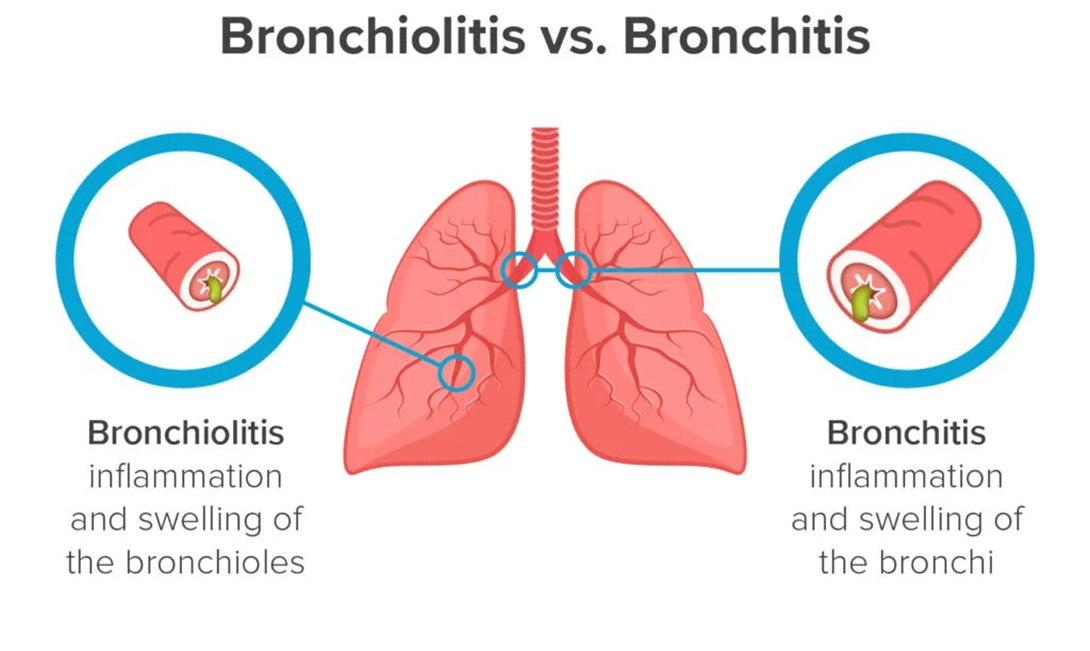A nurse is monitoring an infant who is 6 months old and has sneezing, coughing, nasal congestion, intermittent fever, and apneic spells. The nurse should recognize these findings are consistent with which of the following diagnoses?
Epiglottitis
Bronchiolitis
Influenza
Croup
The Correct Answer is B
Choice A reason: Epiglottitis is a life-threatening condition that causes inflammation and swelling of the epiglottis, the flap of tissue that covers the entrance to the trachea. It can block the airway and cause respiratory distress. The signs and symptoms of epiglottitis include drooling, dysphagia, dysphonia, high fever, and tripod position. Epiglottitis is rare in infants and more common in children aged 2-6 years.
Choice B reason: Bronchiolitis is a viral infection that causes inflammation and mucus production in the bronchioles, the smallest airways in the lungs. It can impair gas exchange and cause respiratory distress. The signs and symptoms of bronchiolitis include sneezing, coughing, nasal congestion, wheezing, tachypnea, retractions, and apneic spells. Bronchiolitis is common in infants and children under 2 years of age, especially during the winter months.
Choice C reason: Influenza is a viral infection that affects the respiratory system. It can cause fever, chills, headache, muscle aches, fatigue, sore throat, cough, and nasal congestion. Influenza can also lead to complications such as pneumonia, otitis media, and sinusitis. Influenza is common in children and adults of all ages, especially during the flu season.
Choice D reason: Croup is a viral infection that causes inflammation and narrowing of the larynx and trachea. It can cause a characteristic barking cough, hoarseness, stridor, and respiratory distress. Croup is common in children aged 6 months to 3 years, especially during the fall and winter months.

Nursing Test Bank
Naxlex Comprehensive Predictor Exams
Related Questions
Correct Answer is D
Explanation
Choice A reason: Cranberry juice is not a good choice for a child who has had a tonsillectomy, as it is acidic and may cause pain and irritation to the throat. The nurse should avoid offering citrus juices or carbonated beverages to the child.
Choice B reason: Vanilla milkshake is also not a good choice for a child who has had a tonsillectomy, as it is thick and may coat the throat and interfere with healing. The nurse should avoid offering dairy products or foods that are sticky or hard to swallow to the child.
Choice C reason: Cubed ice is not a good choice for a child who has had a tonsillectomy, as it may be too cold and cause vasoconstriction and bleeding. The nurse should avoid offering very cold or very hot fluids to the child.
Choice D reason: Water is the best choice for a child who has had a tonsillectomy, as it is clear, bland, and hydrating. The nurse should encourage the child to drink plenty of water to prevent dehydration and promote healing.
Correct Answer is C
Explanation
Choice A reason: This statement is incorrect, as giving an oral rehydration solution to an infant who is projectile vomiting may worsen the dehydration and electrolyte imbalance. The nurse should advise the parent to stop feeding the infant and seek medical attention.
Choice B reason: This statement is incorrect, as burping the baby more frequently during feedings may not prevent the projectile vomiting, which is caused by a mechanical obstruction of the stomach, not by air swallowing. The nurse should assess the parent for signs of pyloric stenosis, such as a palpable olive-shaped mass in the right upper quadrant of the abdomen.
Choice C reason: This statement is correct, as bringing the baby in to the clinic today is the best course of action for an infant who is projectile vomiting, which is a sign of a serious condition such as pyloric stenosis, a narrowing of the opening between the stomach and the small intestine. The nurse should inform the parent that the infant needs immediate evaluation and treatment to prevent complications such as dehydration, malnutrition, and metabolic alkalosis.
Choice D reason: This statement is incorrect, as trying switching to a different formula may not help the infant who is projectile vomiting, which is not related to the type of formula, but to a structural problem in the gastrointestinal tract. The nurse should not suggest changing the formula without consulting the provider.
Whether you are a student looking to ace your exams or a practicing nurse seeking to enhance your expertise , our nursing education contents will empower you with the confidence and competence to make a difference in the lives of patients and become a respected leader in the healthcare field.
Visit Naxlex, invest in your future and unlock endless possibilities with our unparalleled nursing education contents today
Report Wrong Answer on the Current Question
Do you disagree with the answer? If yes, what is your expected answer? Explain.
Kindly be descriptive with the issue you are facing.
